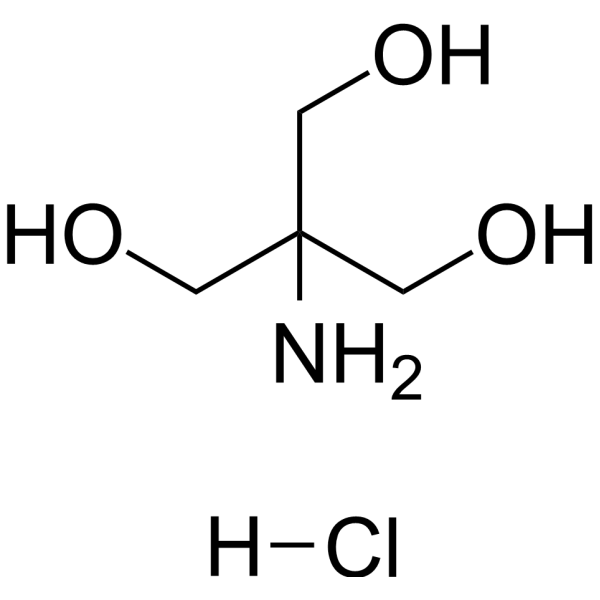
Trometamol hydrochloride
CAS No. 1185-53-1
Trometamol hydrochloride( Tromethamine hydrochloride )
Catalog No. M27730 CAS No. 1185-53-1
Trometamol hydrochloride (Tromethamine hydrochloride) is a biologically inert amino alcohol of low toxicity, which buffers carbon dioxide and acids in vitro and in vivo.
Purity : >98% (HPLC)
 COA
COA
 Datasheet
Datasheet
 HNMR
HNMR
 HPLC
HPLC
 MSDS
MSDS
 Handing Instructions
Handing Instructions
| Size | Price / USD | Stock | Quantity |
| 500MG | 26 | In Stock |


|
| 1G | Get Quote | In Stock |


|
Biological Information
-
Product NameTrometamol hydrochloride
-
NoteResearch use only, not for human use.
-
Brief DescriptionTrometamol hydrochloride (Tromethamine hydrochloride) is a biologically inert amino alcohol of low toxicity, which buffers carbon dioxide and acids in vitro and in vivo.
-
DescriptionTrometamol hydrochloride (Tromethamine hydrochloride) is a biologically inert amino alcohol of low toxicity, which buffers carbon dioxide and acids in vitro and in vivo. Trometamol hydrochloride is an effective amine compound for pH control in the physiological range.
-
In Vitro——
-
In Vivo——
-
SynonymsTromethamine hydrochloride
-
PathwayOthers
-
TargetOther Targets
-
Recptor——
-
Research Area——
-
Indication——
Chemical Information
-
CAS Number1185-53-1
-
Formula Weight157.59
-
Molecular FormulaC4H12ClNO3
-
Purity>98% (HPLC)
-
SolubilityIn Vitro:?DMSO : 250 mg/mL (1586.29 mM)
-
SMILESCl.NC(CO)(CO)CO
-
Chemical Name——
Shipping & Storage Information
-
Storage(-20℃)
-
ShippingWith Ice Pack
-
Stability≥ 2 years
Reference
1.Purohit S, Bohra MK, Jain R. Identification of Bioactive Pentacyclic Triterpenoids and Fatty Acid Derivatives from Cissus quadrangularis and C. rotundifolia Through Untargeted Metabolite Profiling. Appl Biochem Biotechnol. 2022 May 5.
molnova catalog



related products
-
[bAla8]-Neurokinin A...
[bAla8]-Neurokinin A(4-10) is a neurokinin 2 (NK2) receptor agonist.
-
Retronecine
Retronecine acts as the better competitor for the competitive inhibition of antibodies to Retronecine.
-
Sulforhodamine B sod...
Sulforhodamine B sodium salt is a fluorescent dye. It can be used from laser-induced fluorescence to the quantification of cellular proteins of cultured cells.



 Cart
Cart
 sales@molnova.com
sales@molnova.com


